News
Michigan football’s new scoreboard, lights and audio system
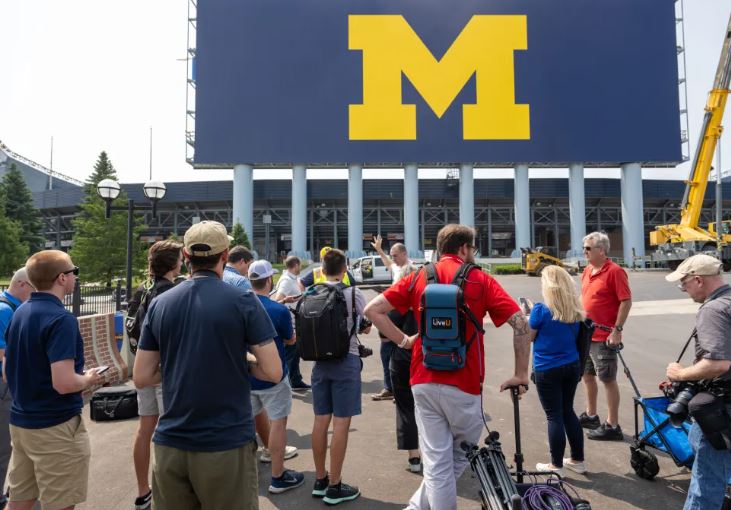
Article by Keith Hellems, M.D. ’62 hellems.xraydoc@verizon.net
Portions of this article are excerpted from an article in the Detroit Free press by Tony Garcia (https://www.freep.com/story/sports/college/universitymichigan/wolverines/2023/08/02/michigan-football-unveils-massivescoreboard/70514657007/)
The installation of the new scoreboards, among other upgrades, at Michigan Stadium is nearly complete and they’re quite large.
The structures, which reside in exactly the same positions as before at the north and south ends of the stadium, are 179 feet wide and 62 feet tall – 85% larger than the previous boards (109 feet by 55 feet). The video boards themselves are 152 feet by 55 feet; that’s a 118% increase from the old boards (85 feet by 45 feet).
U-M officials said each board, by itself, would be the nation’s third-largest, behind only Auburn’s Jordan-Hare Stadium and Purdue’s Ross-Ade Stadium. However, as the Wolverines also pointed out, those fields only have one scoreboard.
The new scoreboards were part of a $41-million dollar project, which also included $8 million in production room upgrades, $5 million to upgrade the audio system and $4 million in “permanent safety additions for access” of the boards.
There are multiple factors, both in the video display that you see but also in addition to all of this, they did a total refurb of the Crisler production studios.
Each board needed two new massive columns, which weigh 60-70 tons apiece, to support the structure, They were transported on trucks from Mount Joy, Pennsylvania.
That was arguably one of the most laborious parts of the process as workers – 40-50 on site at a time, with a combined 13,000 man-hours in steelwork alone and more than 35,000 feet of cabling – crews have been drilling the foundation since winter.
As for the function of the boards, the plan is to use the additional space to have more in-depth stats available to fans during games, as well as show other games’ scores more consistently, to compete with the at-home experience.
“We’re really trying to prioritize what’s done for the fans,” said Jake Stocker, U-M’s director of game presentation and fan experience. “Using this new technology to make it a better fan experience, knowing that people can’t always connect to their cell phones at Michigan Stadium, so we’re giving them that experience.
Furthermore, they’re much higher definition that the boards installed in 2011, now capable of handling somewhere between 4K and 8K resolution (though it’s not an exact comparison, given LED resolution is measured differently than a standard TV).”
“It’s a night-and-day difference,” said one project leader. “The pixel density is increased significantly.”
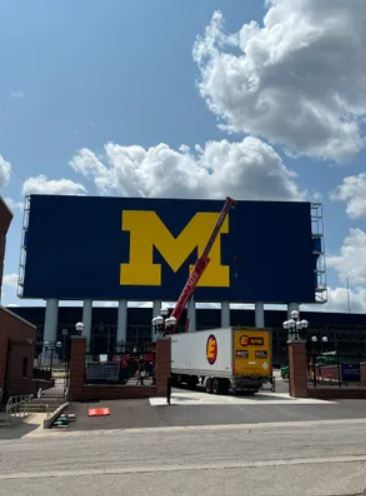
There are upgrades to the audio system which include new concourse speakers as well as a new system in the south scoreboard. That, combined with the upgrades in the production room, will allow audio engineers more flexibility with the sound at the stadium and the ability to control individual aspects in the stadium.
The Crisler production room – which not only runs the videoboards at Michigan Stadium but is the main production room for U-M’s sites for hockey (Yost Ice Arena), baseball and softball (Ray Fisher Stadium), field hockey (Phyllis Ocker Field), soccer (Michigan Soccer Stadium) and lacrosse (U-M Lacrosse Stadium) – is also getting a full renovation.
Because the bid for the contract came in under budget, the athletic department had enough money left over to upgrade the video boards for the baseball, softball, field hockey and soccer sites, plus Cliff Keen Arena (which hosts volleyball, wrestling and men’s gymnastics). The boards are expected to last “at least 10 years” before upgrades, though it isn’t expected they’d need to be fully replaced.
An article by Isaiah Hole further summarizes the scoreboard features (https://sports.yahoo.com/look-michigan-football-shows-off-192521140.html) . The new scoreboards reside in exactly the same positions as before at the north and south ends of the stadium, are 179 feet wide and 62 feet tall – 85% larger than the previous boards (109 feet by 55 feet). The video boards themselves are 152 feet by 55 feet; that’s a 118% increase from the old boards (85 feet by 45 feet).

Check out the details below:
- Original structures were 109′ wide by 55′ tall edge to edge. New ones are 179′ wide by 62′ tall (85% increase in size)
- Old video screens were 85′ wide x 45′ tall. New ones are 152′ wide x 55′ tall (118% increase)
- Approx. 30,000 ft (or just over 5.5 miles) of new cabling has been pulled on the project.
- To date, almost 35,000 work-hours by the 3 construction teams combined. About 13,000 work-hours just in steel.
- Each new column is between 60-70 tons each and is supported by an approx. 12′ x 65′ foundation pier.
- The columns had to be specially transported 1 at a time from the factory in Mt. Joy, PA.
The backside facing the street, outside of the stadium

You can see that the scoreboards are wider by the two new support columns added to either side. Michigan is keeping the traditional, clean Block M on blue as the logo, as it was with the 2011 design change.
The sides under construction
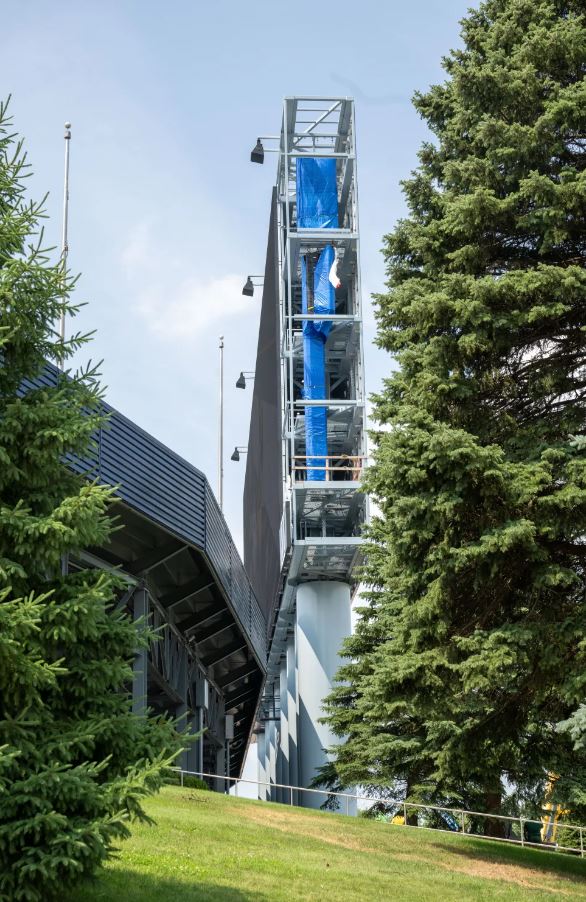
You can get a better idea of what’s inside by seeing the unfinished portions of the scoreboard, with the supports and cabling that are encased. Of course, when the season begins, the boards will be enclosed and look like one big television.
Inside the stadium

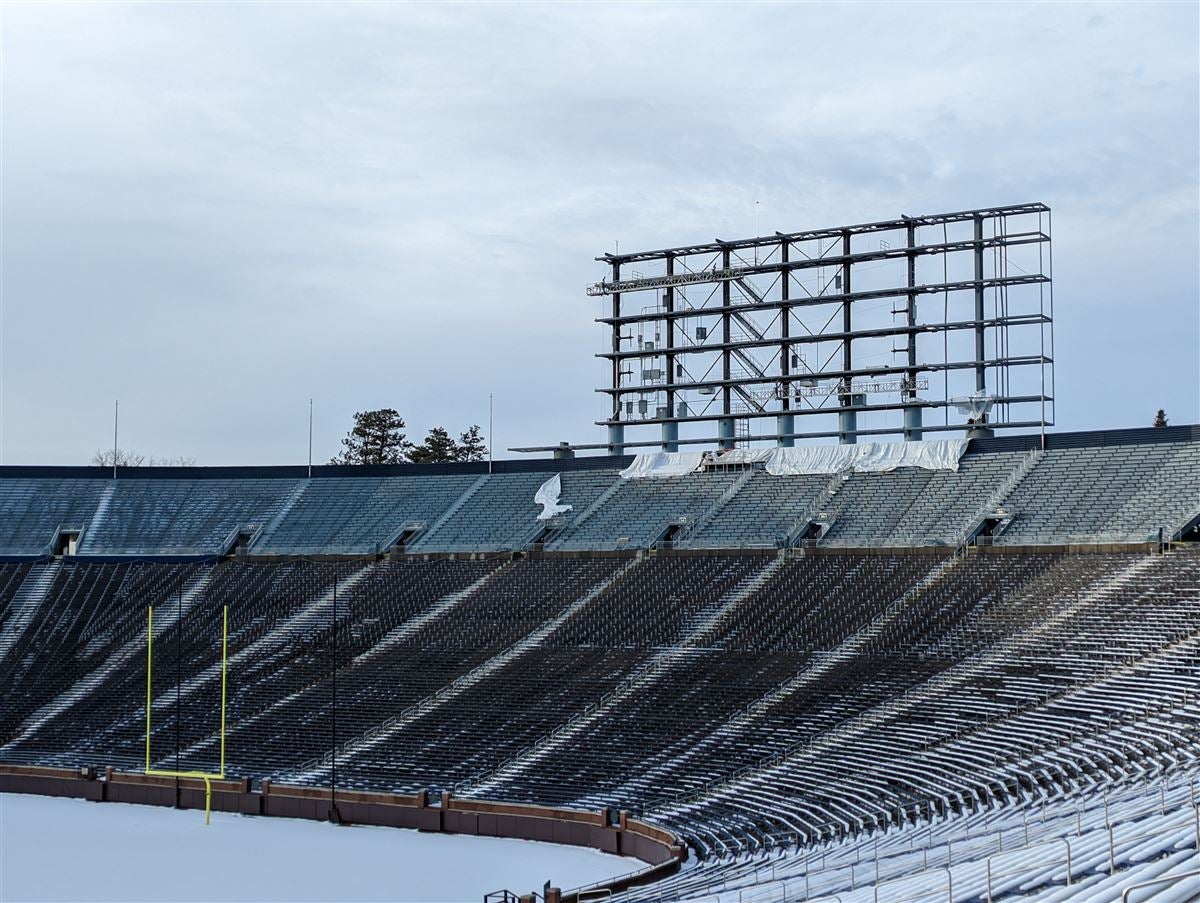
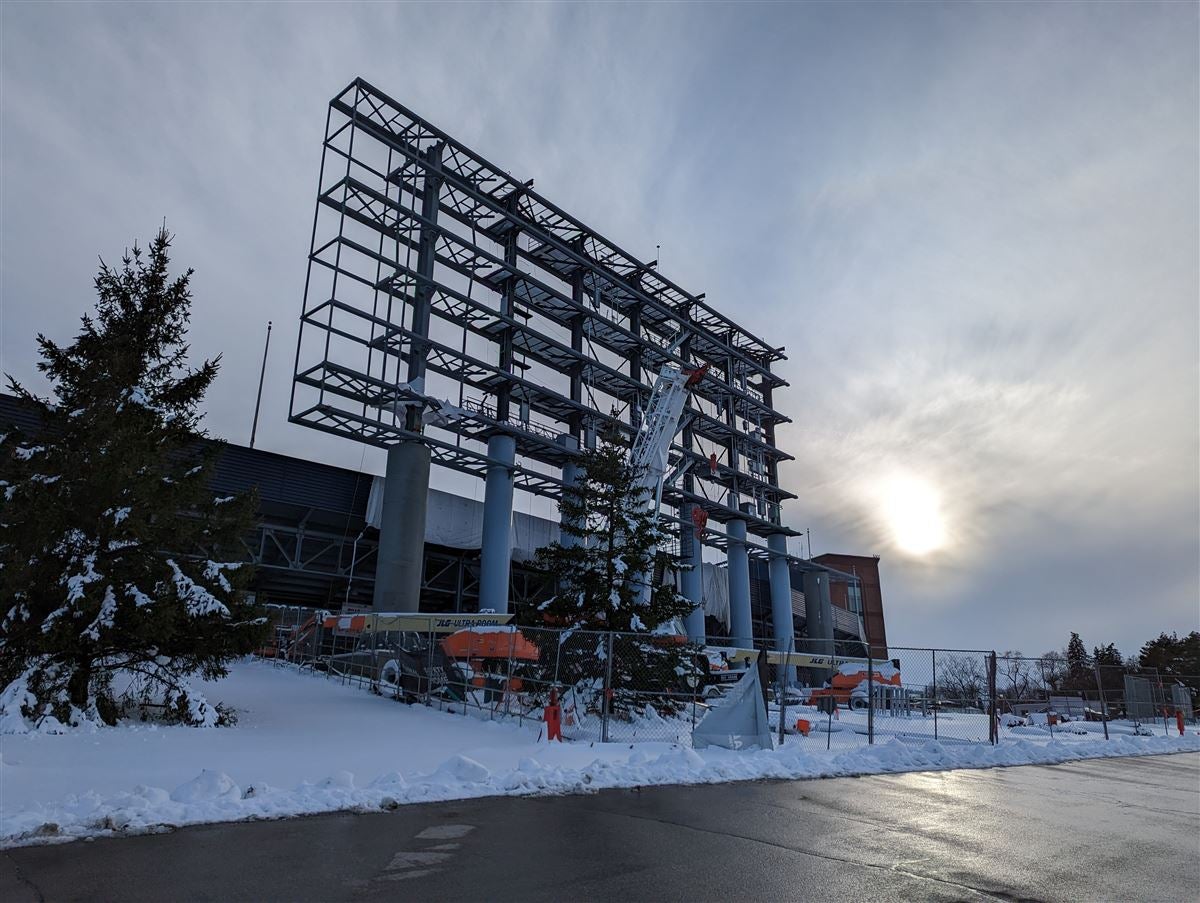

The prior video boards were installed in 2011.
Michigan Stadium scoreboard renderings
Michigan Athletics has provided the following renderings of the upgraded scoreboards.
The 2011-22 boards appear as dashed lines for comparison:
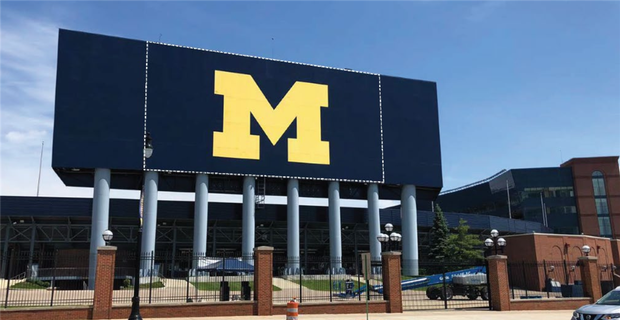
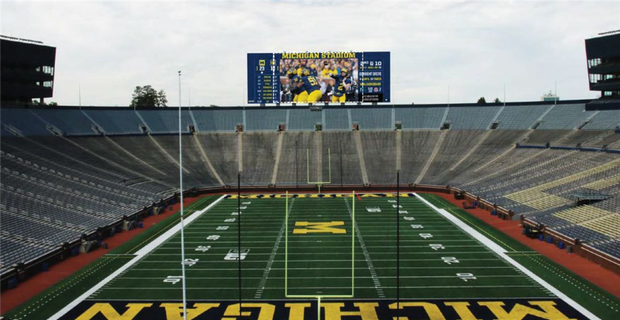
Some of the photos and comments were taken from an article by Alejandro Zuniga, writer for Michigan Insider, 247 Sports (https://247sports.com/college/michigan/article/michigan-stadium-new-scoreboardslights-audio-system-the-inside-scoop-about-the-big-house-upgrades-213537934/)
If you have articles you might write for our Michigan Delta Chi eBlasts let me know. Additions or corrections to this article can also be sent to hellems.xraydoc@verizon.net.

